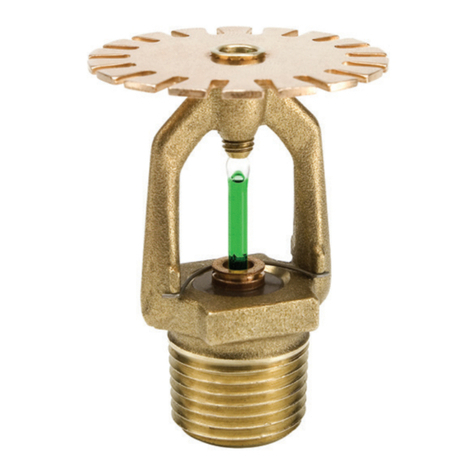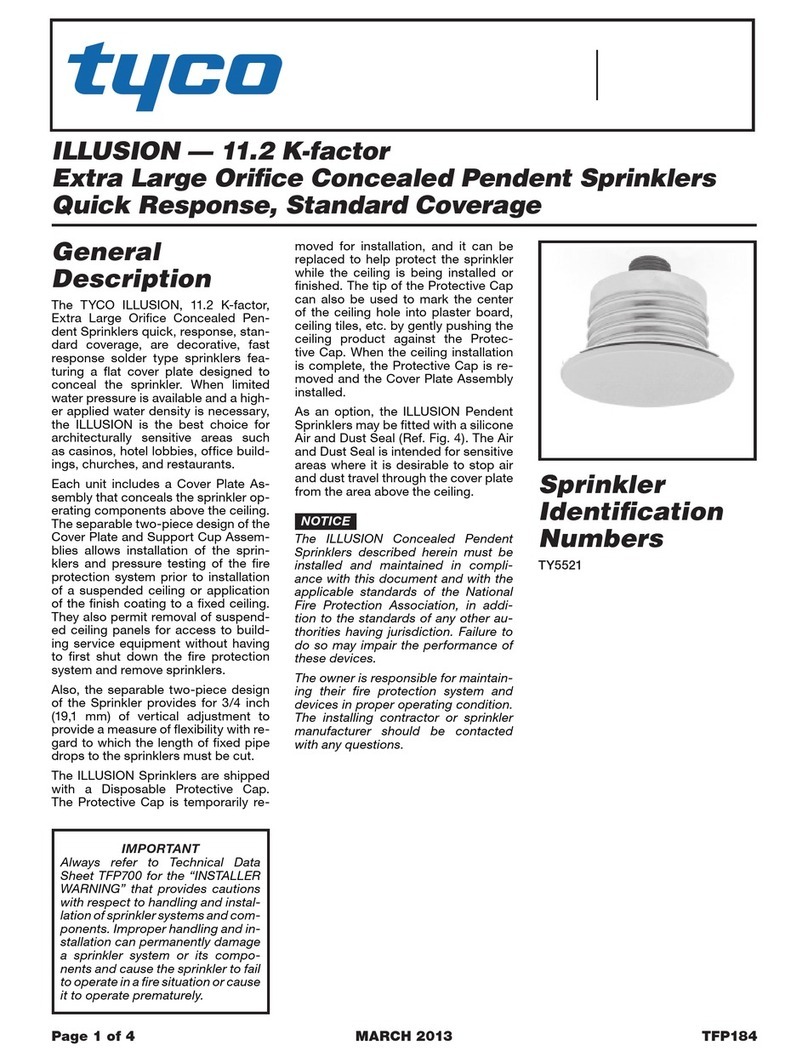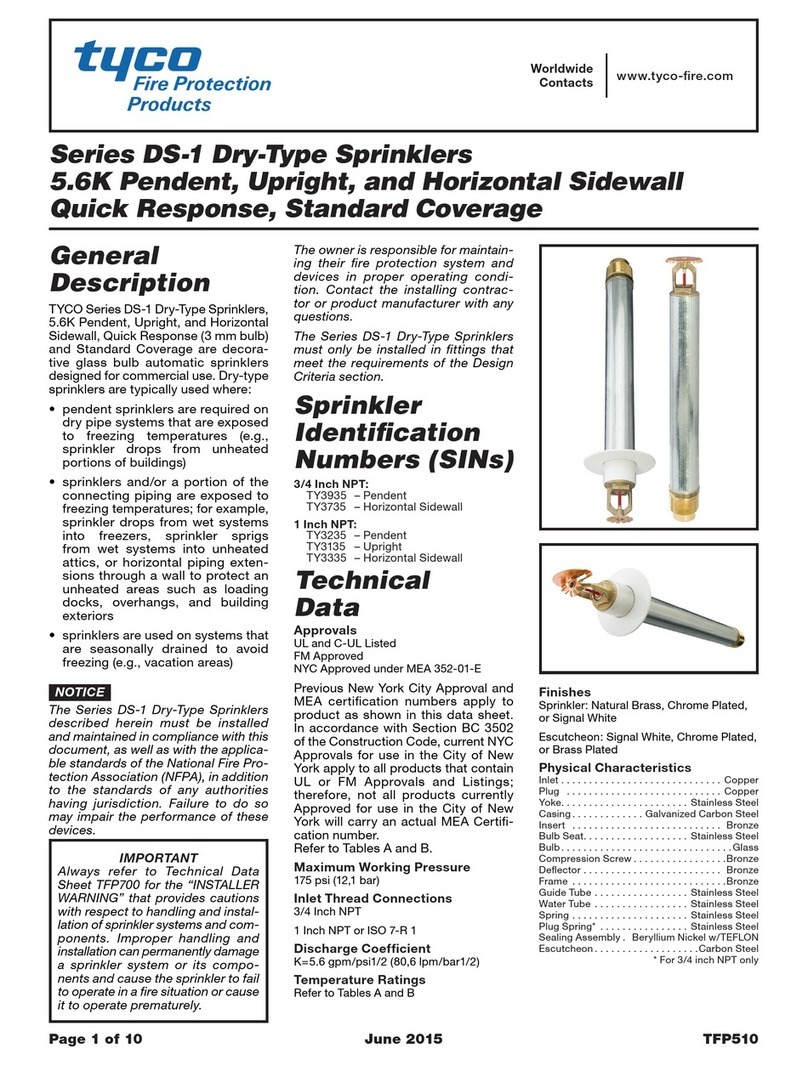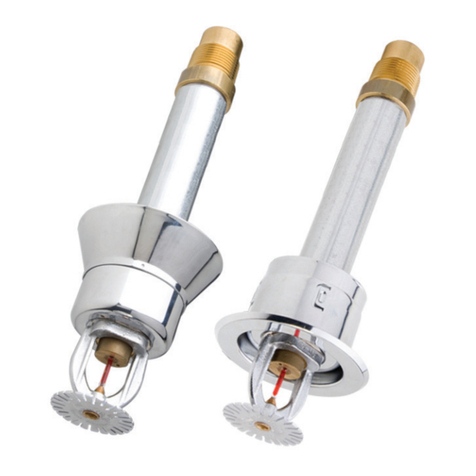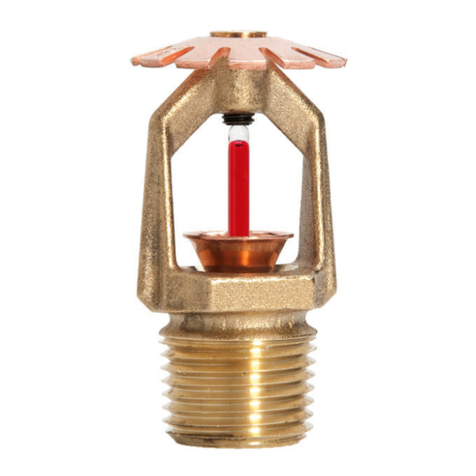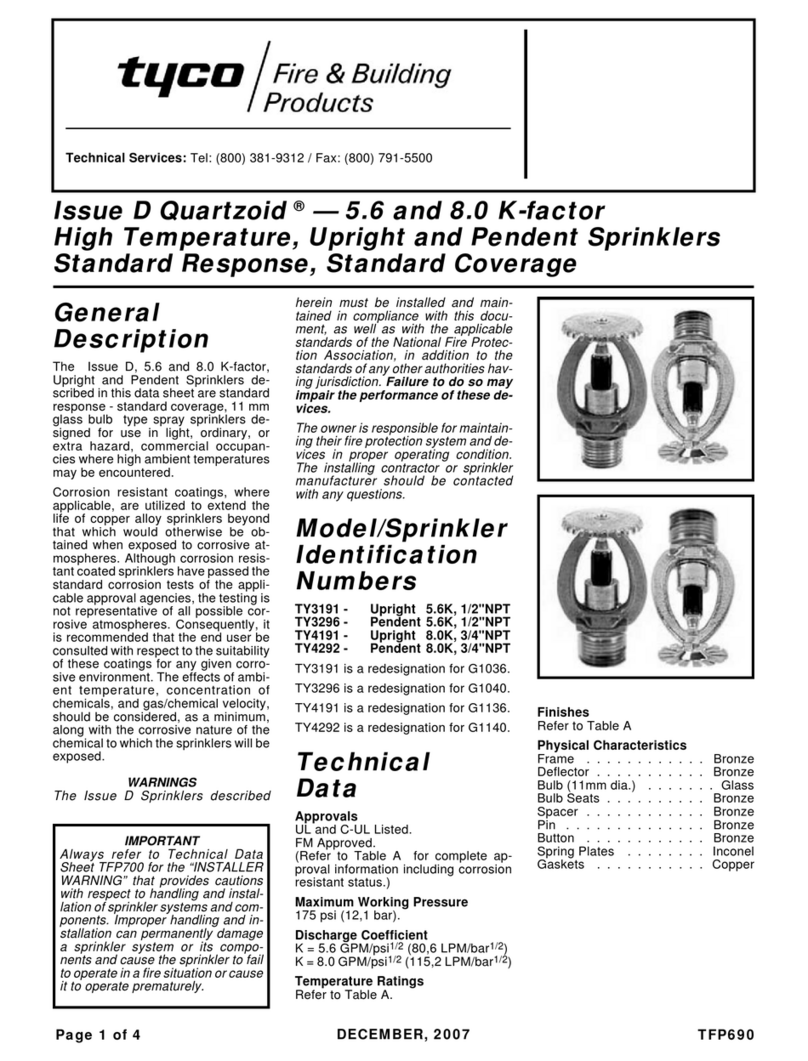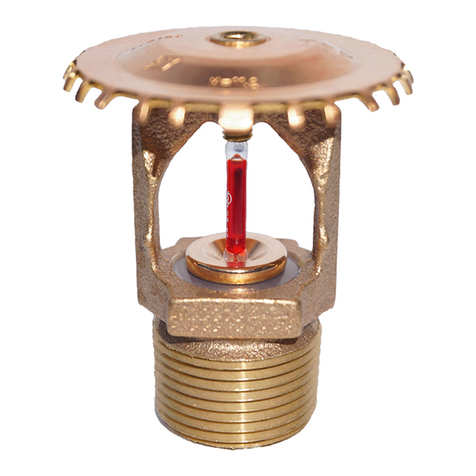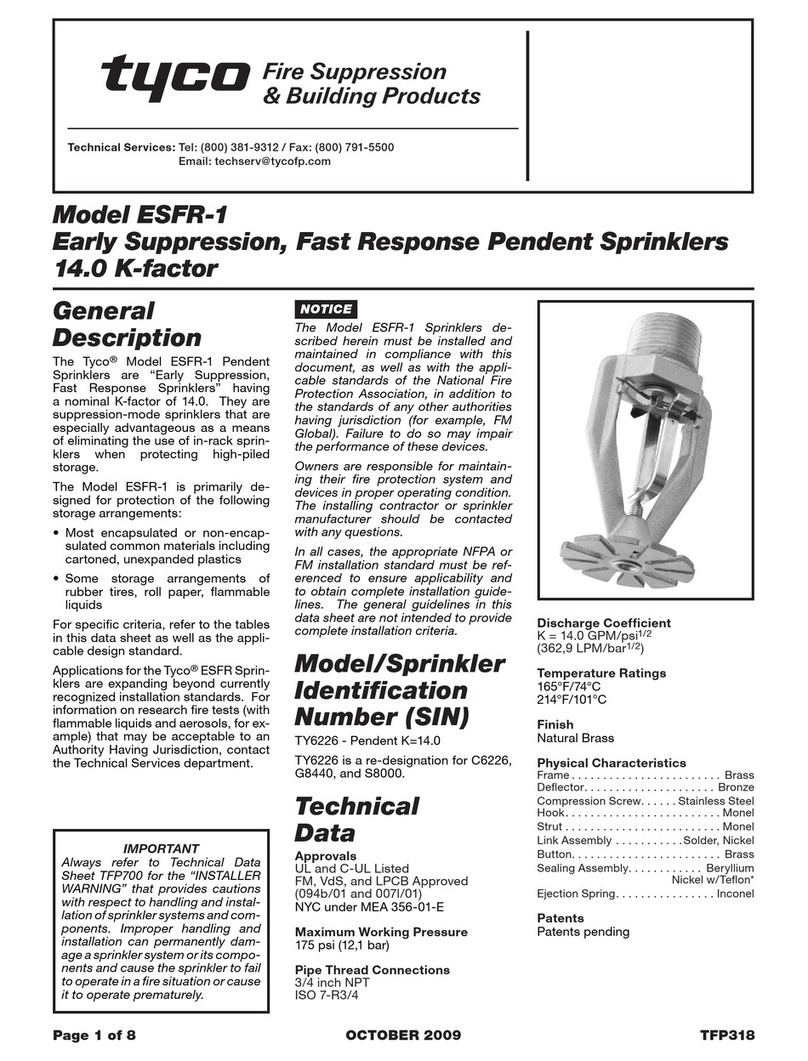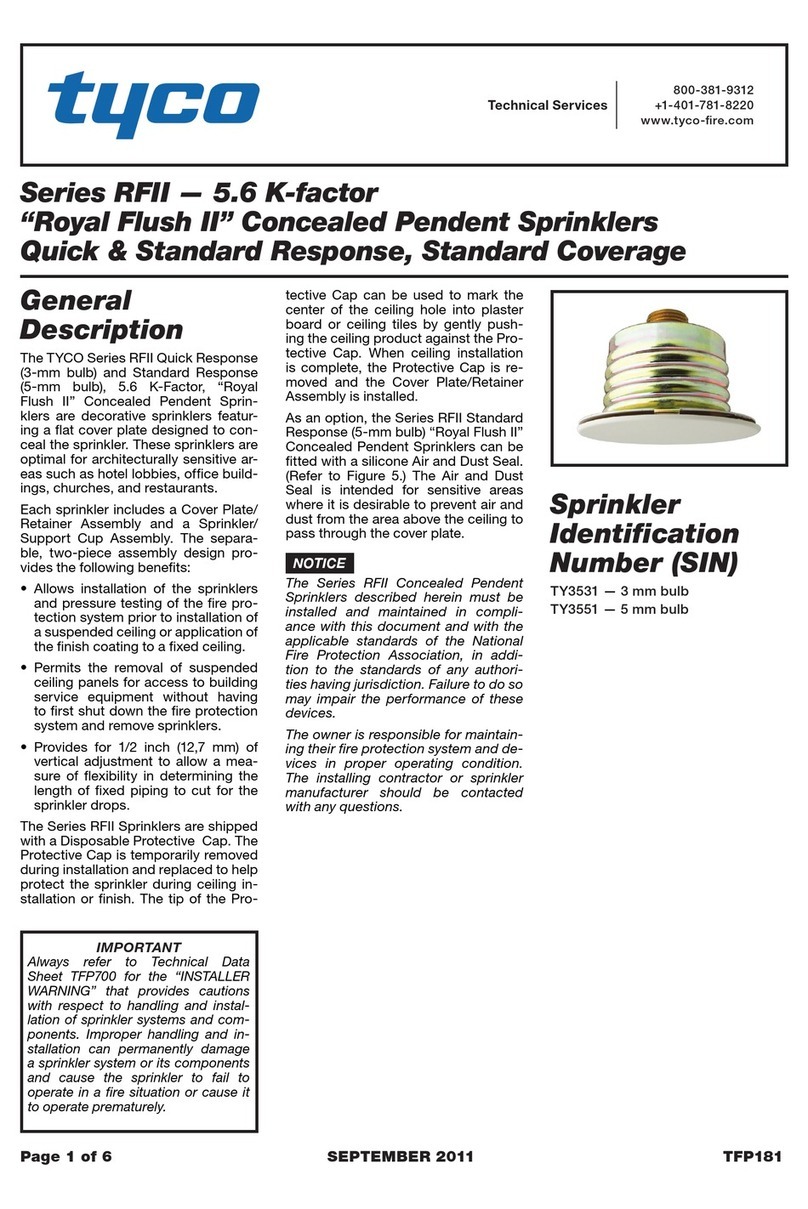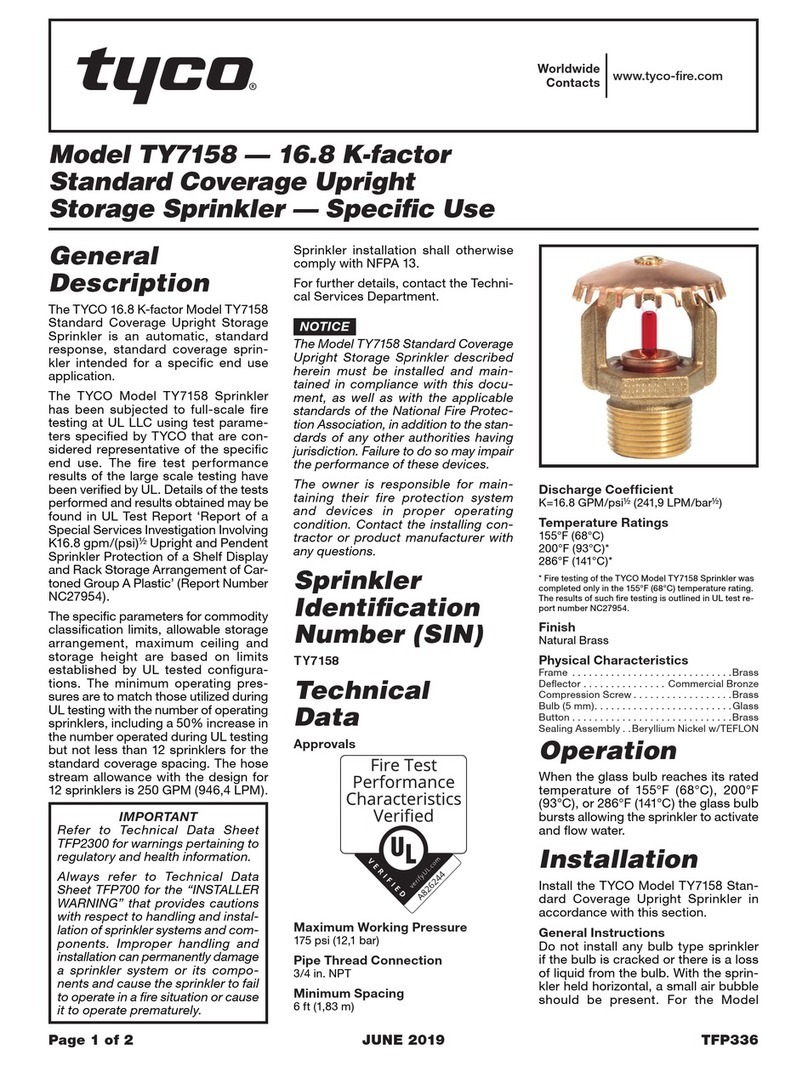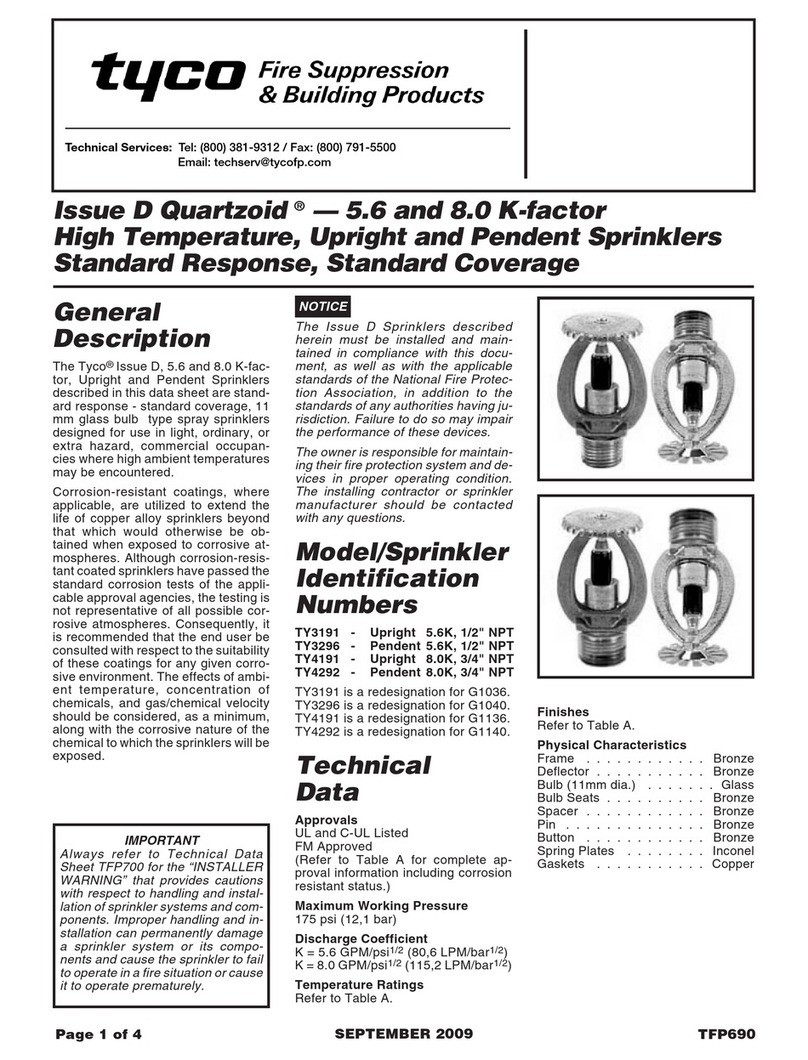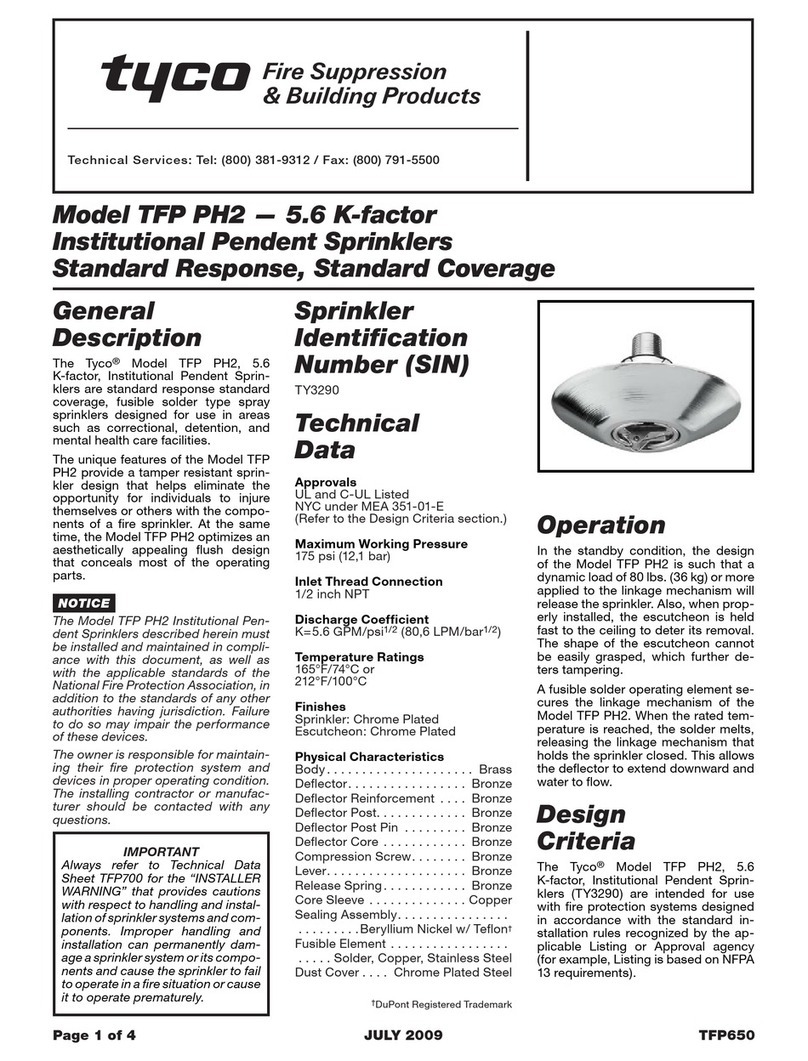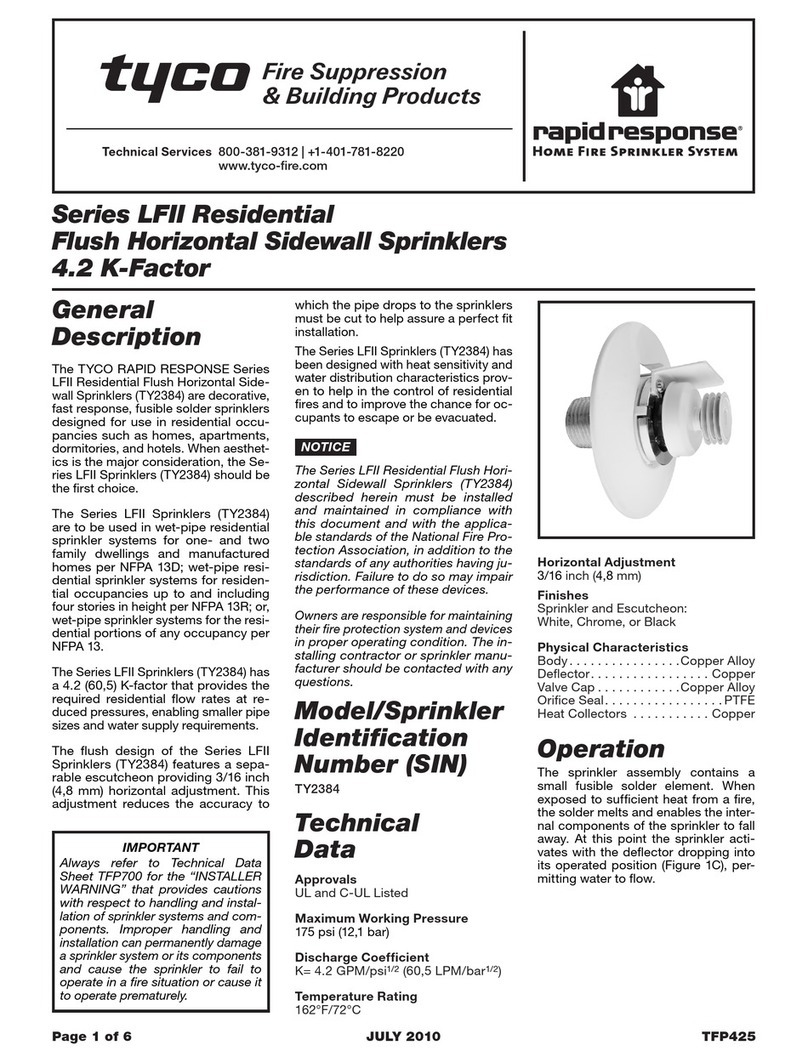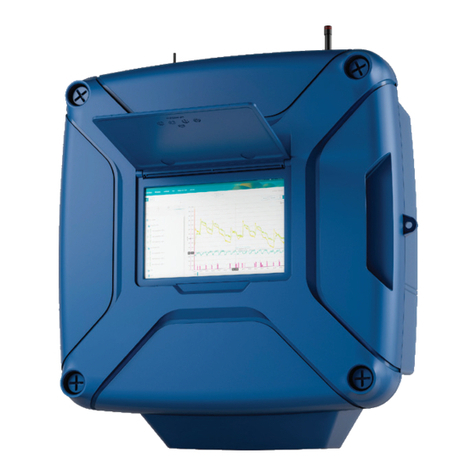
by gently pushing the ceiling material
against the center point of the Protec-
tive Cap.
NOTICE
As long as the Protective Cap remains
in place, the system is considered to
be “Out of Service”.
Step 6. After the ceiling has been
completed with the 2-1/2 inch (63,5
mm) diameter clearance hole and in
preparation for installing the Cover
Plate Assembly, remove and discard
the Protective Cap, and verify that the
Deflector moves up and down freely. If
the Sprinkler has been damaged and
the Deflector does not move up and
down freely, replace the entire Sprin-
kler assembly. Do not attempt to mod-
ify or repair a damaged sprinkler.
Step 7. When installing an Air and
Dust Seal, refer to Figure 4, otherwise
proceed to Step 8. To attach the Air
and Dust Seal, verify the angle of the
outside edge of the seal is oriented
according to Figure 4. Start the edge
of the Retainer in the grooved slot of
the Air and Dust Seal and continue
around the retainer until the entire Air
and Dust Seal is engaged.
Step 8. Screw on the Cover Plate/
Retainer Assembly until the Retainer
(Figure 2) or Air and Dust Seal (Fig-
ure 4) contacts with the ceiling. Do not
continue to screw on the Cover Plate/
Retainer Assembly such that it lifts a
ceiling panel out of its normal position.
If the Cover Plate/Retainer Assembly
cannot be engaged with the Support
Cup or the Cover Plate/Retainer As-
sembly cannot be engaged sufficient-
ly to contact the ceiling, the Sprinkler
Fitting must be repositioned.
Care and
Maintenance
The TYCO Model ELOC must be
maintained and serviced in accor-
dance with this section.
Before closing a fire protection sys-
tem main control valve for mainte-
nance work on the fire protection sys-
tem that it controls, permission to shut
down the affected fire protection sys-
tem must be obtained from the prop-
er authorities and all personnel who
may be affected by this action must
be notified.
Absence of the Cover Plate Assem-
bly may delay sprinkler operation in a
fire situation. When properly installed,
there is a nominal 3/32 inch (2,4 mm)
air gap between the lip of the Cov-
er Plate and the ceiling, as shown in
Figure 2. This air gap is necessary for
proper operation of the sprinkler. If the
ceiling is to be repainted after the in-
stallation of the Sprinkler, care must
be exercised to ensure that the new
paint does not seal off any of the air
gap.
Factory painted Cover Plates must
not be repainted. They should be re-
placed, if necessary, by factory paint-
ed units. Non-factory applied paint
may adversely delay or prevent sprin-
kler operation in the event of a fire.
Do not pull the Cover Plate relative to
the Enclosure. Separation may result.
Sprinklers that are found to be leaking
or exhibiting visible signs of corrosion
must be replaced.
Automatic sprinklers must never be
painted, plated, coated, or other-
wise altered after leaving the factory.
Modified sprinklers must be replaced.
Sprinklers that have been exposed to
corrosive products of combustion, but
have not operated, should be replaced
if they cannot be completely cleaned
by wiping the sprinkler with a cloth or
by brushing it with a soft bristle brush.
Care must be exercised to avoid dam-
age to the sprinklers before, during,
and after installation. Sprinklers dam-
aged by dropping, striking, wrench
twist/slippage, or the like, must be
replaced. Also, replace any sprinkler
that has a cracked bulb or that has
lost liquid from its bulb. (Ref. Installa-
tion Section.)
The owner is responsible for the in-
spection, testing, and maintenance of
their fire protection system and devic-
es in compliance with this document,
as well as with the applicable stan-
dards of the National Fire Protection
Association (e.g., NFPA 25), in addi-
tion to the standards of any other au-
thorities having jurisdiction. Contact
the installing contractor or product
manufacturer with any questions.
Automatic sprinkler systems should
be inspected, tested, and maintained
by a qualified Inspection Service in
accordance with local requirements
and/or national codes.
Ordering
Procedure
Contact your local distributor for avail-
ability. When placing an order, indi-
cate the full product name and Part
Number (P/N).
Sprinkler Assembly
Specify: TY5522, (specify temperature
rating) Model ELOC Pendent Sprin-
kler, P/N (specify)
160°F (71°C) 212°F (100°C)
TY5522 ....50-701-1-160 50-701-1-212
Separately Ordered Cover Plate
Specify: (specify temperature rating)
Model ELOC Cover Plate with (specify
finish), P/N (specify)
139°F (59°C)(a) 165°F ( 74°C)(b)
Grey White (RAL 9002)
. . . . . . . . . 56-892-0-135 56-892-0-165
Brass .... 56-892-1-135 56-892-1-165
Pure White (RAL 9010)(c)
. . . . . . . . . 56-892-3-135 56-892-3-165
Signal White (RAL 9003)
. . . . . . . . . 56-892-4-135 56-892-4-165
Chrome... 56-892-9-135 56-892-9-165
Custom... 56-892-X-135 56-892-X-165
(a) For use with 160°F (71°C) sprinklers
(b) For use with 212°F (100°C) sprinklers
(c) Eastern Hemisphere sales only
Sprinkler Wrench
Specify: W-Type 18 Sprinkler Wrench,
P/N 56-000-1-265
Air and Dust Seal
Specify: Air and Dust Seal, P/N
56-908-1-001
GLOBAL HEADQUARTERS | 1400 Pennbrook Parkway, Lansdale, PA 19446 | Telephone +1-215-362-0700
TFP250
Page 4 of 4
Copyright © 2015 Tyco Fire Products, LP. All rights reserved.
TEFLON is trademark of The DuPont Corporation
CUP
AIR
AND DUST
SEAL
COVER
LIP OF
CEILING
SEAL
SHOWN
COVER
PLATE
RETAINER
ASSEMBLY
FIGURE 4
OPTIONAL AIR AND DUST SEAL FOR MODEL ELOC (TY5522)

